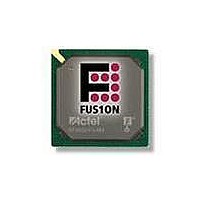AFS250-FGG256 Actel, AFS250-FGG256 Datasheet - Page 62

AFS250-FGG256
Manufacturer Part Number
AFS250-FGG256
Description
FPGA - Field Programmable Gate Array 250K System Gates
Manufacturer
Actel
Datasheet
1.AFS600-PQG208.pdf
(330 pages)
Specifications of AFS250-FGG256
Processor Series
AFS250
Core
IP Core
Maximum Operating Frequency
1098.9 MHz
Number Of Programmable I/os
114
Data Ram Size
36864
Supply Voltage (max)
1.575 V
Maximum Operating Temperature
+ 70 C
Minimum Operating Temperature
0 C
Development Tools By Supplier
AFS-Eval-Kit, AFS-BRD600, FlashPro 3, FlashPro Lite, Silicon-Explorer II, Silicon-Sculptor 3, SI-EX-TCA
Mounting Style
SMD/SMT
Supply Voltage (min)
1.425 V
Number Of Gates
250 K
Package / Case
FPBGA-256
Lead Free Status / RoHS Status
Lead free / RoHS Compliant
Available stocks
Company
Part Number
Manufacturer
Quantity
Price
Company:
Part Number:
AFS250-FGG256
Manufacturer:
Actel
Quantity:
135
Company:
Part Number:
AFS250-FGG256
Manufacturer:
ACTEL
Quantity:
6 800
Company:
Part Number:
AFS250-FGG256I
Manufacturer:
Microsemi SoC
Quantity:
10 000
- Current page: 62 of 330
- Download datasheet (13Mb)
Device Architecture
2- 46
Data operations are performed in widths of 1 to 4 bytes. A write to a location in a page that is not already
in the Page Buffer will cause the page to be read from the FB Array and stored in the Page Buffer. The
block that was addressed during the write will be put into the Block Buffer, and the data written by WD
will overwrite the data in the Block Buffer. After the data is written to the Block Buffer, the Block Buffer is
then written to the Page Buffer to keep both buffers in sync. Subsequent writes to the same block will
overwrite the Block Buffer and the Page Buffer. A write to another block in the page will cause the
addressed block to be loaded from the Page Buffer, and the write will be performed as described
previously.
The data width can be selected dynamically via the DATAWIDTH input bus. The truth table for the data
width settings is detailed in
widths greater than 8 bits, the corresponding address bits are ignored—when DATAWIDTH = 0 (2 bytes),
ADDR[0] is ignored, and when DATAWIDTH = '10' or '11' (4 bytes), ADDR[1:0] are ignored. Data pins are
LSB-oriented and unused WD data pins must be grounded.
Table 2-21 • Data Width Settings
Flash Memory Block Protection
Page Loss Protection
When the PAGELOSSPROTECT pin is set to logic 1, it prevents writes to any page other than the
current page in the Page Buffer until the page is either discarded or programmed.
A write to another page while the current page is Page Loss Protected will return a STATUS of '11'.
Overwrite Protection
Any page that is Overwrite Protected will result in the STATUS being set to '01' when an attempt is made
to either write, program, or erase it. To set the Overwrite Protection state for a page, set the
OVERWRITEPROTECT pin when a Program operation is undertaken. To clear the Overwrite Protect
state for a given page, an Unprotect Page operation must be performed on the page, and then the page
must be programmed with the OVERWRITEPROTECT pin cleared to save the new page.
LOCKREQUEST
The LOCKREQUEST signal is used to give the user interface control over simultaneous access of the
FB from both the User and JTAG interfaces. When LOCKREQUEST is asserted, the JTAG interface will
hold off any access attempts until LOCKREQUEST is deasserted.
Flash Memory Block Operations
FB Operation Priority
The FB provides for priority of operations when multiple actions are requested simultaneously.
Table 2-22
Table 2-22 • FB Operation Priority
DATAWIDTH[1:0]
00
01
10, 11
Operation
System Initialization
FB Reset
Read
Write
Erase Page
Program
Unprotect Page
Discard Page
shows the priority order (priority 0 is the highest).
Table
2-21. The minimum resolvable address is one 8-bit byte. For data
R e visio n 1
4 bytes [31:0]
2 byte [15:0]
Data Width
1 byte [7:0]
Priority
0
1
2
3
4
5
6
7
Related parts for AFS250-FGG256
Image
Part Number
Description
Manufacturer
Datasheet
Request
R

Part Number:
Description:
FPGA 256/I°/Fusion Voltage: 1.5, 1.8, 2.5, 3.3 Mixed Voltage
Manufacturer:
Actel
Datasheet:

Part Number:
Description:
FPGA - Field Programmable Gate Array 250K System Gates
Manufacturer:
Actel
Datasheet:

Part Number:
Description:
MCU, MPU & DSP Development Tools Silicon Sculptor Programming Mod
Manufacturer:
Actel

Part Number:
Description:
MCU, MPU & DSP Development Tools InSystem Programming ProASICPLUS Devices
Manufacturer:
Actel

Part Number:
Description:
Programming Socket Adapters & Emulators PQ160 Module
Manufacturer:
Actel

Part Number:
Description:
Programming Socket Adapters & Emulators Axcelerator Adap Module Kit
Manufacturer:
Actel

Part Number:
Description:
Programming Socket Adapters & Emulators Evaluation
Manufacturer:
Actel

Part Number:
Description:
Programming Socket Adapters & Emulators AFDX Solutions
Manufacturer:
Actel

Part Number:
Description:
Programming Socket Adapters & Emulators SILICON SCULPTOR ADAPTER MODULE
Manufacturer:
Actel
Datasheet:

Part Number:
Description:
Programming Socket Adapters & Emulators Axcelerator Adap Module Kit
Manufacturer:
Actel

Part Number:
Description:
Programming Socket Adapters & Emulators Evaluation
Manufacturer:
Actel

Part Number:
Description:
Programming Socket Adapters & Emulators Silicon Sculptor Software
Manufacturer:
Actel

Part Number:
Description:
Programming Socket Adapters & Emulators InSystem Programming ProASICPLUS Devices
Manufacturer:
Actel











